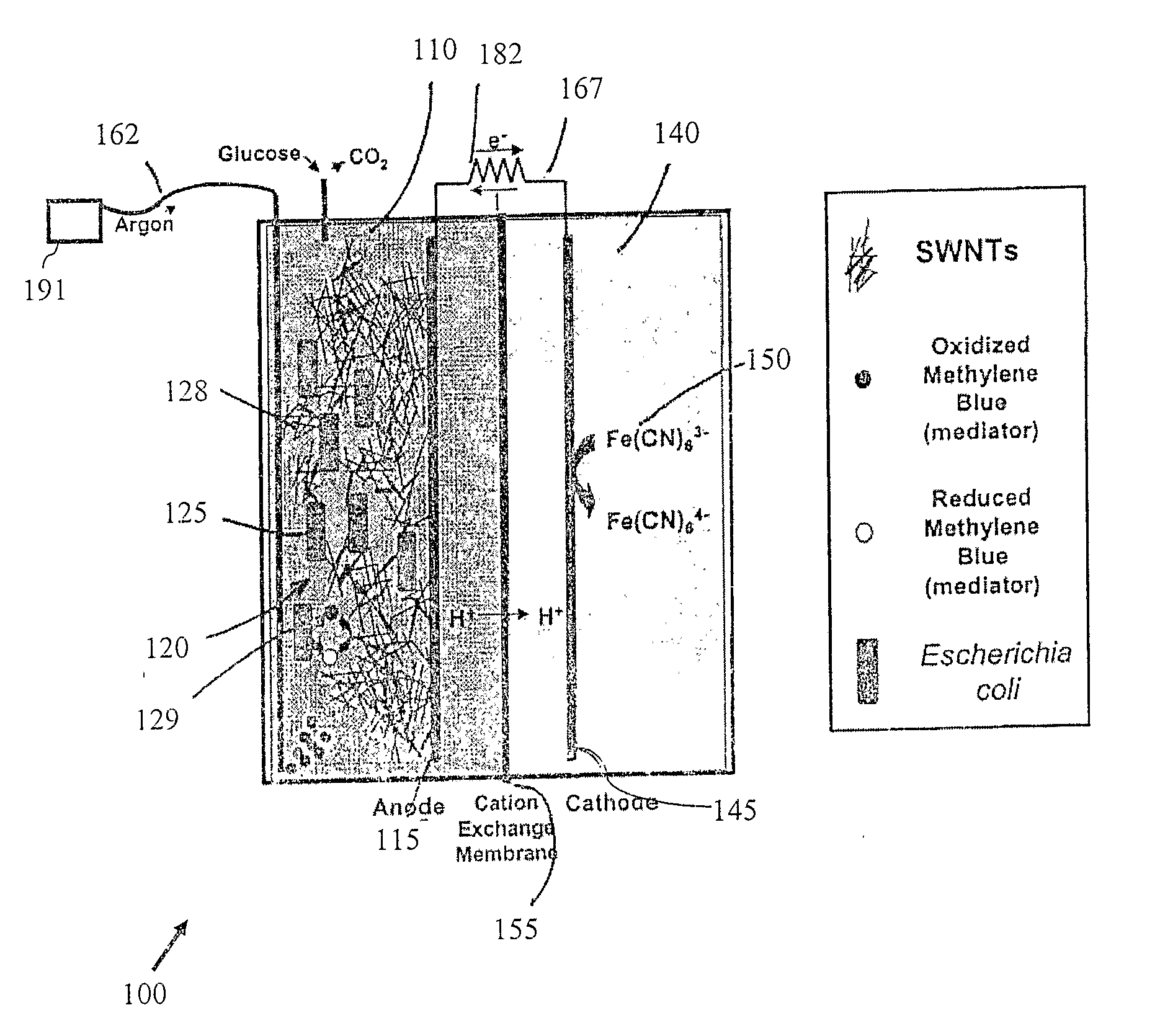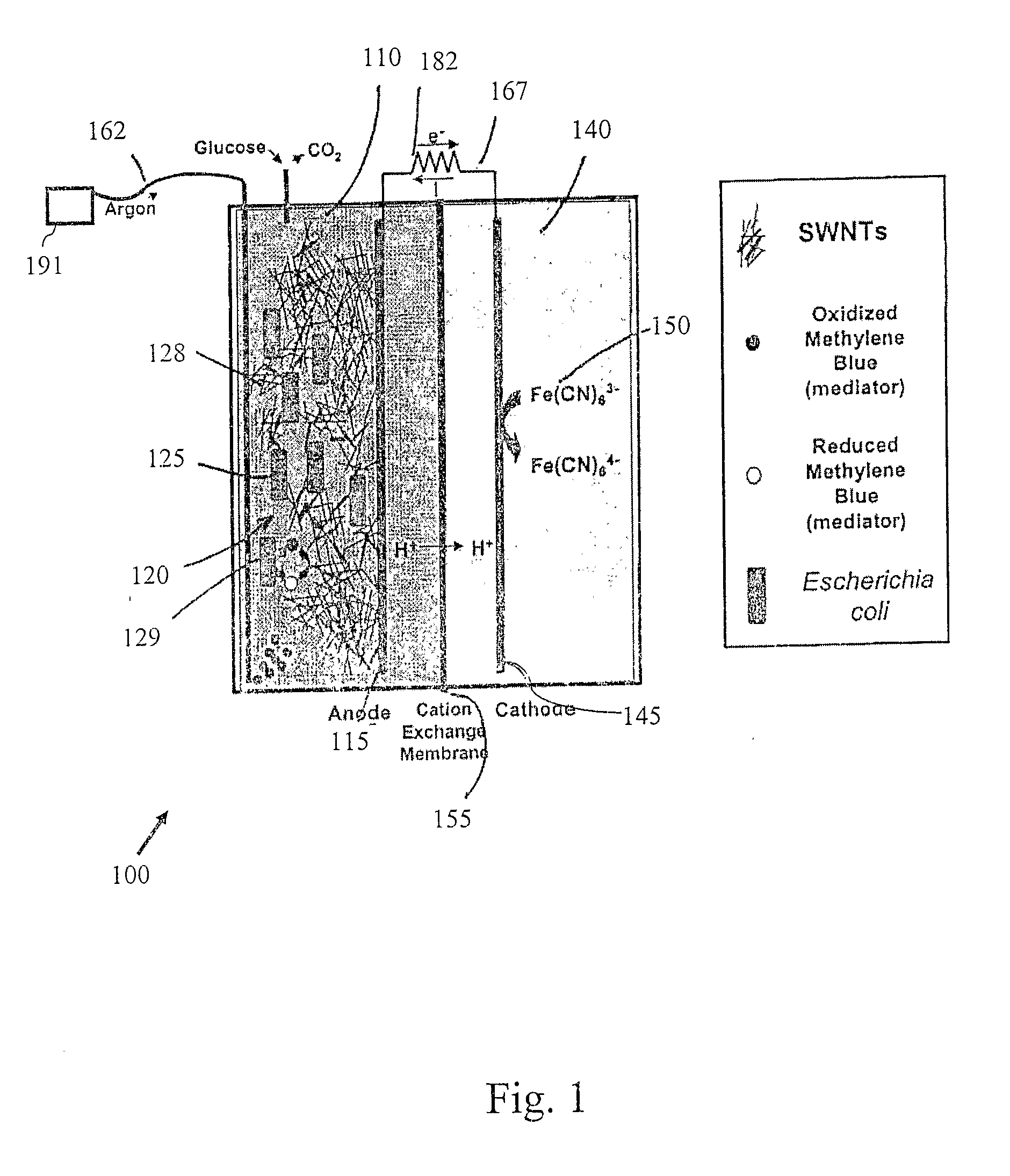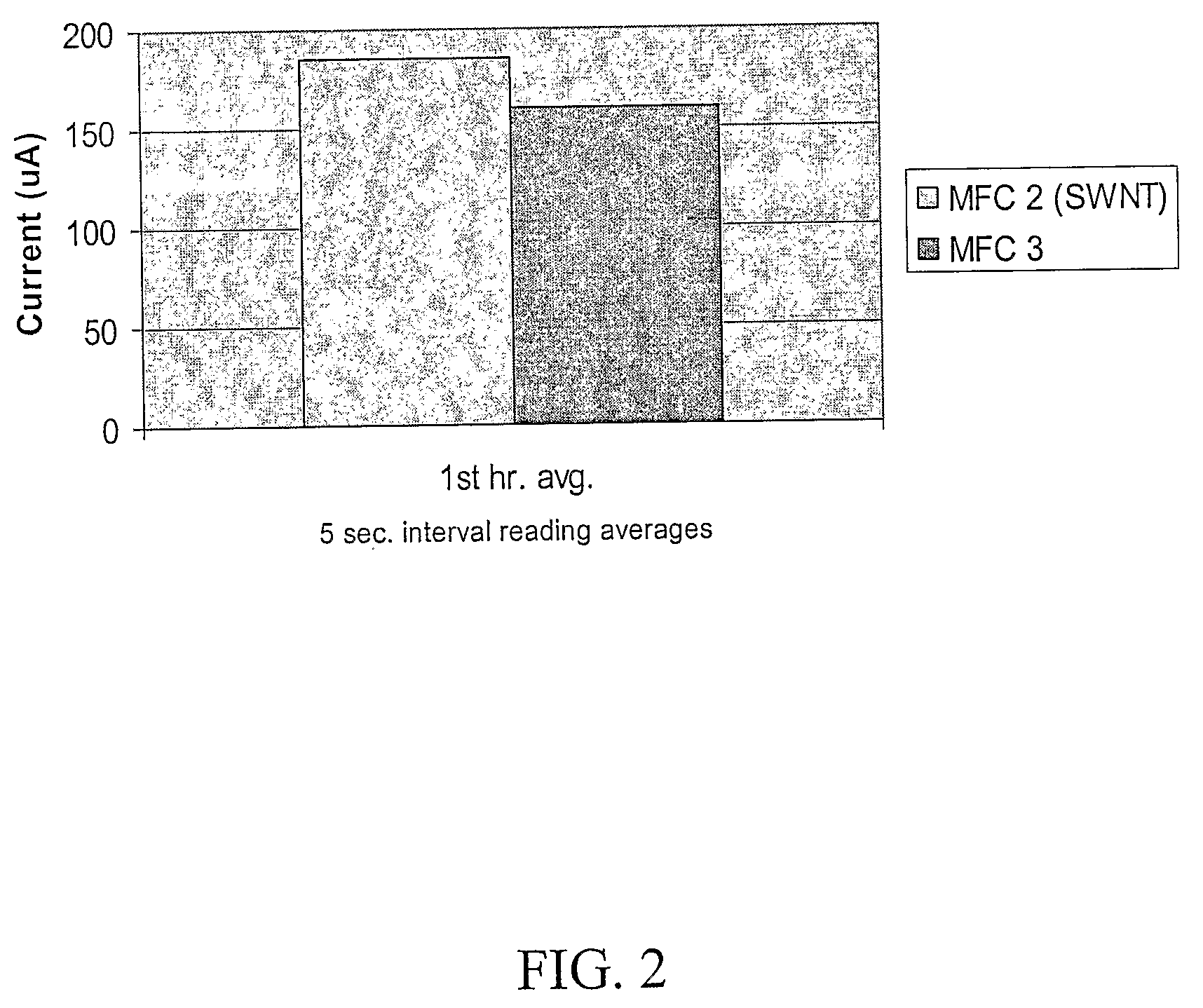Enhanced Electrical Contact to Microbes in Microbial Fuel Cells
- Summary
- Abstract
- Description
- Claims
- Application Information
AI Technical Summary
Benefits of technology
Problems solved by technology
Method used
Image
Examples
example 1
[0027]A suspension of single-walled carbon nanotubes (SWNTs) was added to the anode compartment of a two chambered microbial fuel cell (MFC). The fuel cell included Escherichia coli W3110 (ATCC 27325) as the electron donor in the anode compartment and methylene blue was used as the redox mediator.
[0028]The basic MFC assembly (NCBE, The University of Reading, UK) included Perspex (acrylic) chambers, neoprene gaskets, a carbon fiber anode and cathode (cut to 2.4 cm×3.3 cm) and a cation-exchange membrane (Nafion-117). Assembly of these components was performed as disclosed by the supplier and as described by Benetto (1990) Biotechnology Education 1: 163-168. In addition, platinum wire (from Mini-Subcell GT electrophoresis apparatus electrodes, BioRad, Hercules, Calif.) was used to connect the carbon fiber anode and cathode to the external circuit, consisting of a 1000 ohm resistor and an ammeter (46-Range Digital Multimeter with PC interface and data-logging MeterView 1.0 software, Rad...
example 2
[0035]Microbial fuel cells were set up as before, but a mixed length carbon fiber suspension was used to increase the effective anode surface area and to improve electron transfer efficiency. During the first trial it was found that the mixed carbon fibers could not be transferred by syringe as the SWNTs described in Example 1 were. This necessitated the feeding of the aggregated fibers through the feeding / vent tube in the anode chamber, after the addition of the cell suspension, prior to addition of mediator. This process was performed by pushing the fibers through the tube with toothpicks. Upon addition of all components, the carbon fiber MFC(CF MFC) was observed to produce a current that was nearly twice that of the control MFC as shown in FIG. 5.
[0036]For the second trial with the CF-MFC, the carbon fiber suspension was transferred as several aggregates from which most of the liquid had been removed, to the anode compartment during assembly. Escherichia coli W3110 cells were res...
PUM
 Login to View More
Login to View More Abstract
Description
Claims
Application Information
 Login to View More
Login to View More - R&D
- Intellectual Property
- Life Sciences
- Materials
- Tech Scout
- Unparalleled Data Quality
- Higher Quality Content
- 60% Fewer Hallucinations
Browse by: Latest US Patents, China's latest patents, Technical Efficacy Thesaurus, Application Domain, Technology Topic, Popular Technical Reports.
© 2025 PatSnap. All rights reserved.Legal|Privacy policy|Modern Slavery Act Transparency Statement|Sitemap|About US| Contact US: help@patsnap.com



